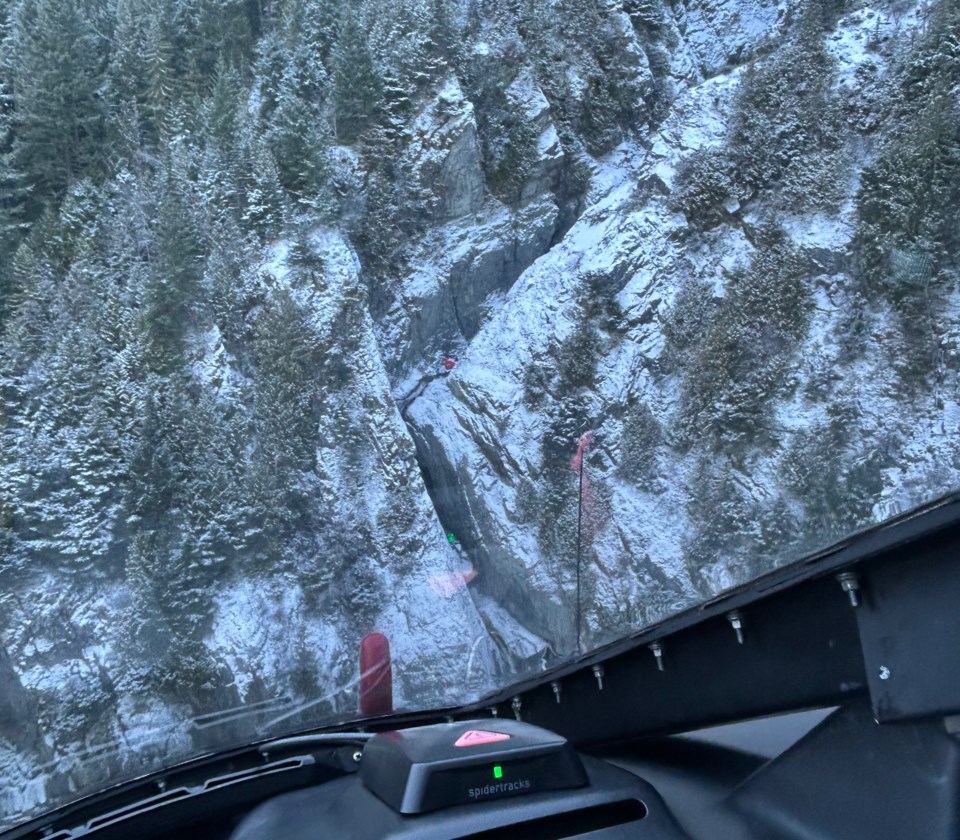The backcountry is crawling with skiers, splitboarders and snowmobilers for the 2024-25 winter season, and so far, Whistler Search and Rescue (WSAR) has responded to 10 calls in the first eight weeks of winter conditions.
Brad Sills, president of WSAR, said the majority of the calls they’ve received are pretty routine, ranging from knee injuries to lost hikers. Around Christmas, however, calls started getting a bit more complicated.
The first serious call related to the avalanche on Ipsoot Mountain, near Pemberton, when five heli-skiers were rescued. WSAR mobilized its rapid intervention team to respond, and thankfully, everyone survived the avalanche.
Perhaps the most out-there incident this season related to three lost individuals attempting to snowshoe to Kees and Claire Hut.
Sills said three foreign nationals on student visas heard about the lodge on Instagram, and booked a reservation for Dec. 23. They made it to Singing Pass before one group member got separated from his companions. That night, a windstorm came with gusts up to 120 km/h making rescue impossible.
“We had them bed down for the night about a kilometre short from the hut. We told them to come out of the alpine, coached them to get under the trees, huddle up and spend the night,” Sills said. “WSAR went in the morning and heli-ed them out to the clinic, and they were both hypothermic. The third person in their group eluded WSAR, and the avalanche risk increased throughout the storm.”
WSAR found one sign that he may have been OK: rescuers found an empty McDonald’s burger wrapper on the ground in a treed area, and the other two rescues said their pal happened to be carrying their McDonald’s dinner.
As WSAR prepared to launch a significant response for the third missing snowshoer, they received a call from the RCMP stating the missing individual's credit card was used at McDonald's in Whistler Village.
“Instead of taking the left-hand turn as his other two friends did on the way to Kees and Claire, he took a right-hand turn and went up to Oboe, spent part of the night up there and then retreated into the forest and found the trails,” Sills said.
After spending the night outside, he made his way down the lifts at Whistler Blackcomb, went back for more fast food, and charged his cell phone, which died while in the backcountry.
“These are the situations we run into quite a bit being at an international resort. This group of people were in jeans, and they had canvas-top running shoes in snowshoes,” Sills said.
All three were transported to Vancouver for medical care and recovered.
Another complex call occurred New Year's Day with a trio of experienced skiers. A father with his young son and daughter required a night vision hoist while stranded in a bowl above Cheakamus Lake at Whistler Blackcomb.
“It’s a very difficult place for a fit person to get out of," Sills said. "Two children, one an asthmatic without medicine, presented an extraordinary risk.”
The family dialed 911, but shortly after, their phone was unresponsive. WSAR had their location, and while calls weren’t going through, text messages were.
“We texted them and told them if they hear a helicopter, use their cell phone and point it towards the helicopter,” he said. North Shore Rescue (NSR) was dispatched for a night vision hoist, as they have the security clearance required for night vision rescues, and transported the family to hospital at about 10 p.m.
Then, on Jan. 6, WSAR did a long-line rescue out of the Y chute on Mount Currie. Two split boarders became stranded on their descent. They went down through the chute, and ended up in a series of canyons.
“My understanding is they did a series of rappels already, and on the last one, the rappel line took them under a waterfall. They couldn’t go any further,” Sills said. Fog in Pemberton delayed their rescue, but a helicopter managed to take off from Whistler to make it to the scene. The two were turned over to emergency health services and no further update is available at this time.
WSAR training and fundraising
Aside from responding to emergencies, WSAR members are busy with their winter training regimen focused on winter rescue skills like avalanche, crevasse and gravity-induced trauma rescues—also known as blunt force trauma, first aid and rope rescue programs.
They worked with NSR Jan. 6 to train in helicopter hoist rescues, and they’ve been training on night vision imaging technology. WSAR and NSR share resources, with each specializing in different emergency responses. WSAR tends to focus more on avalanche forecasting and response, but NSR has a license for night vision helicopter operations, which dual members of WSAR and NSR trained on.
For membership numbers, the local chapter has 36 volunteers, and intake is as-needed. They took in 14 members three years ago, and the retention rate is high.
“We bring on people that are committed because it’s a life commitment," Sills said. "Those who come on tend to stay. Our standard is around 13 years for longevity."
For anyone looking to give back to WSAR, the Beacon Pub & Eatery is raising funds through January. The annual fundraiser honours the legacy of Jesse Van Roon, who passed away in a 2021 snowboarding accident on Whistler Mountain. To learn more about the fundraiser, visit the Beacon’s website or ask at the pub about the upcoming après party Jan. 30 from 4 to 8 p.m.





